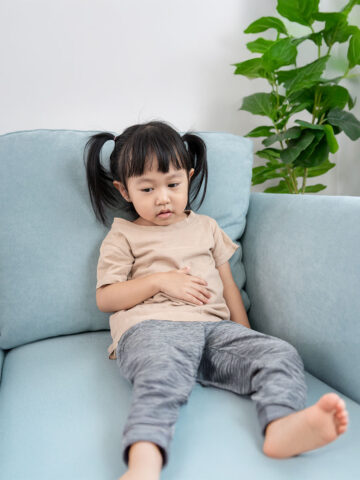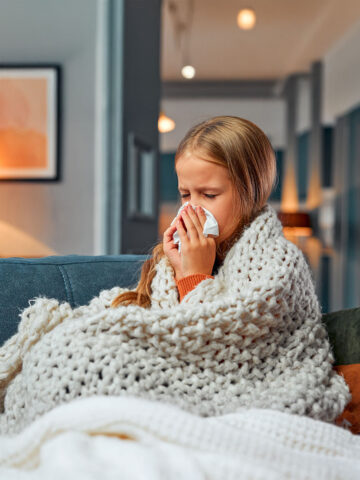By Dr. Eric Ball, a CHOC pediatrician
What is eczema? Atopic dermatitis, more commonly known as eczema, is a common skin condition that can plague everyone from babies to grown-ups. It can be as mild as a nuisance, or more serve with skin so dry it cracks, bleeds or gets infected. Most kids will get an itchy skin rash at some point in childhood, but about one out of every 10 kids will develop eczema.
Eczema causes are unknown, but it’s believed to be a combination between genetics and a trigger, which could be certain foods, seasonal or environmental allergies, stress, hormones and weather. Diagnosing eczema can be tricky because each child has a unique combination of symptoms that can vary in severity, and there is no test to diagnose it definitively. If you suspect your child has eczema, consult your pediatrician. They will conduct a physical examination, and help you identify things in your child’s environment that may be contributing to skin irritation.
Eczema is not contagious, so there is no need to keep a child with eczema home from daycare or school.
Eczema symptoms
Eczema symptoms typically appear within the first few months of life, and almost always before a child turns 5. More than half of all children who suffer from eczema will outgrow it by the time they’re teenagers.
Between 2 and 6 months of age, kids with eczema will have itchy, dry, red skin and small bumps. These eczema symptoms can appear on their cheeks, forehead or scalp. It may spread to the arms, legs and trunk; in the bends of the elbows; behind the knees; or on the backs of the wrists and ankles.
Eczema symptoms tend to worsen and improve over time. For many kids, it begins to improve by the age of 5 or 6; others may have flare-ups into adolescence and early adulthood. In many cases, eczema goes into remission and symptoms may disappear altogether for months or even years.
How to treat eczema
There is no known eczema cure. However, your child’s pediatrician may prescribe a topical corticosteroid, also known as cortisone or steroid creams or ointments, which are commonly used to treat eczema. These “eczema creams” are usually applied directly to the affected area twice a day. Continue using these corticosteroids for as long as your doctor suggests.
These creams and ointments vary in strength, so do not apply a topical corticosteroid intended for someone else.
Your doctor may suggest nonsteroidal medications instead of a topical steroid. These may also prescribe antihistamines to help control itching, or an oral or topical antibiotic to prevent or treat secondary infections common in kids with eczema.
How to help your child with eczema
- Avoid frequent hot baths or showers, which dry out the skin. Use warm waters and mild soaps during bath time. Gently pat their skin dry, instead of scrubbing or toweling.
- Avoid fabrics that may irritate their skin including wool or coarsely woven materials. Favor materials that “breathe” such as cotton.
- Apply moisturizing ointments like petroleum jelly, lotions or creams to their skin two to three times per day. Always apply within a few minutes of bathing after a gently pat dry, before the skin has fully dried. Do this in addition to using a cream prescribed by their pediatrician.
- Apply a cool compress to the skin to ease itching.
- Eliminate known allergens from your home, including certain foods, dust or pet dander.





